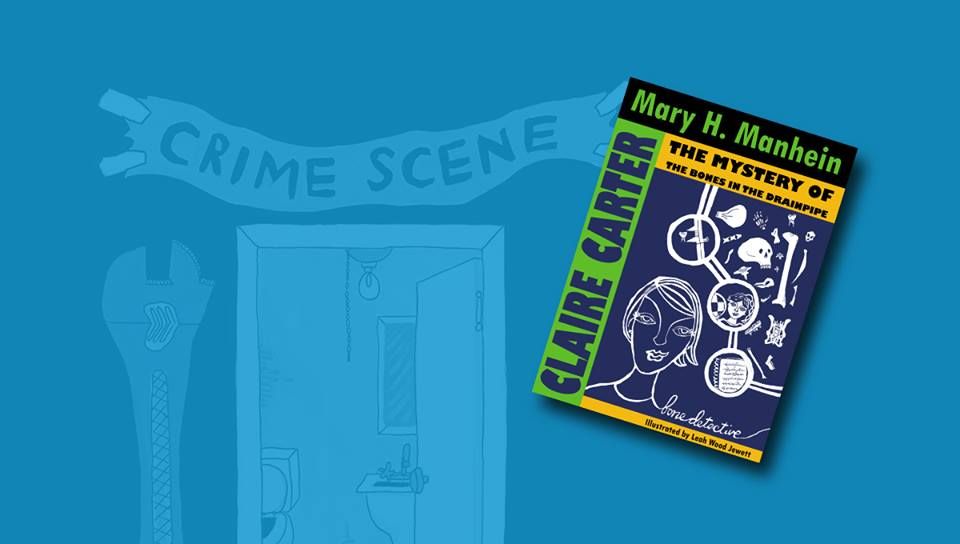Brains behind the bones: Meet the creators of ‘Claire Carter, Bone Detective’
The local farmers market isn’t the typical locale for a business meeting. However, when longtime friends Mary Manhein and Leah Wood Jewett ran into each other one morning, the encounter quickly turned into the start of a new venture for the pair. Manhein, a forensic anthropologist, and Jewett, an artist and the exhibitions coordinator at the LSU Libraries, have joined forces to create Os Liber Press, LLC, a brand-new publishing company specializing in science-focused books for young readers. The debut publication is Claire Carter, Bone Detective, a series that follows a forensic anthropologist and her young niece as they navigate Louisiana and its mysteries.
With the first book in the series out now, we reached out to Manhein and Jewett to learn more about their company, inspirations and what we can expect from them next.
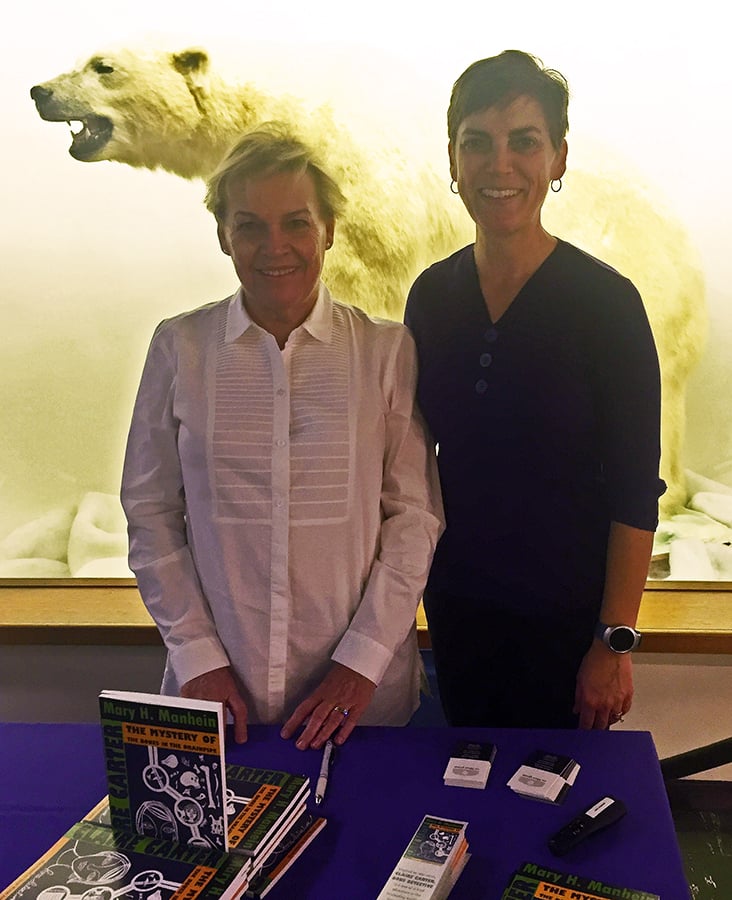
1. What inspired you two to team up and start a publishing company?
Manhein: Since I retired as director of the LSU FACES Laboratory in 2015, I have worked to take on a new project. Though traveling the world (or a lot of it) was fun for a couple of years, I wanted to do something different. Actually, my son Trey said one day: “Mom, why not write for children? There’s not enough books out there for young people that can be both interesting and that fulfill requirements for AR.” I had toyed with the idea prior that that but had never given it serious thought. I saw Leah at the farmers market one day and started chatting with her about starting a company. I knew that Leah had immense talent as an artist and that she and I would be a good fit. We met for lunch and forged an alliance that is working out very well.
Jewett: I am a former student of Mary’s, so we’ve known each other for many years. When she told me that she wanted to write children’s books, I was so excited. I’ve always wanted to illustrate children’s books, and I knew that teaming up with Mary was an amazing opportunity.
2. What are your keys to working well together? Do you think there are advantages to being a female-run company?
M: I think that one of the most important things about working together is related to the fact that we both appreciate the opinion of the other partner and realize that we each bring different perspectives to writing: mine as a forensic anthropologist for almost 30 years and a published author, and Leah’s as a successful artist who is non-traditional in many ways. We respect each other’s opinions, though we may not always agree.
Perhaps, if I had to note anything about an advantage to partnering with a female, I would have to say that females have a tendency to be more straightforward with one another than in a male-female partnership. Some might disagree. In the long run, the personalities and temperament of the partners, more than the sex of each, determine whether or not a partnership can work.
J: Well, for one thing, we have known each other for a long time. One of the many things that I love about Mary is that she says what she thinks–no dancing around the subject. She is always respectful, and there’s no wondering where you stand. From the beginning, we’ve known that we could be honest with each other and, as Mary said, we realize we both have different perspectives that are worth listening to. As far as being women, we’ve both had experiences in the (distant) past where we were told, or it was suggested to us, that women couldn’t do certain things. Maybe that fires us up a little to be sure that, through these stories and through the publishing company, we convey to girls and young women that they can do whatever they set their minds to. We are also very fortunate in that we both have supportive husbands and sons.
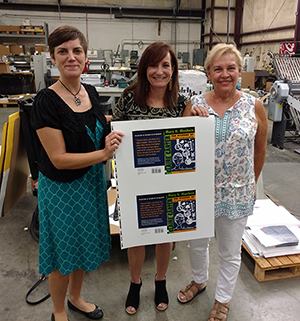
3. What inspired the series Claire Carter, Bone Detective?
M: I wanted to write a series for young people that would explain many of the things that forensic anthropologists do in a way that would not frighten them, yet garner their interest. Over my many years in the field of forensic anthropology, I have given hundreds and hundreds of presentations to both young people and adults. Also, I wanted it to be a series that would qualify as a STEM series that taught young people science, while being intertwined with a good mystery. I wanted it to be set in Louisiana, which is unique in so many ways with its diverse animals and intriguing locations. Each book in the series will highlight a specific location in the state and can double as a geography lesson along the way. Claire Carter’s 11-year-old niece Penelope, who is in “training” to be a bone detective, will assist in teaching young people about the mysteries of the human skeleton and all the many things that forensic anthropologists can learn from studying bones. Children, as well as adults, are fascinated by bones, though a little wary of them at the same time.
4. How do you feel science and creative expression like writing and art go hand in hand?
M: I absolutely love Leah’s contributions to the project. Creative expression through writing and art help to explore science in such a way as to make it intriguing and fun. Educators are constantly looking for ways to engage young people in science. A good mystery that includes science combined with art not only captures attention, but provides a conduit for appreciating and understanding what makes us who we are as humans.
J: Magic happens when science and art come together. Some of the earliest scientific works ever printed have compelling illustrations. They complete the package as far as explaining and describing phenomena goes. Illustrated botanical books are good examples. Mary and I both see the illustrations in the Claire Carter series as puzzles that work with the text to help move the plot forward and pique the interest of the reader. Sometimes, there are a few little lagniappe images that may or may not be referenced in the text, but help the reader understand the characters or situation on another level.
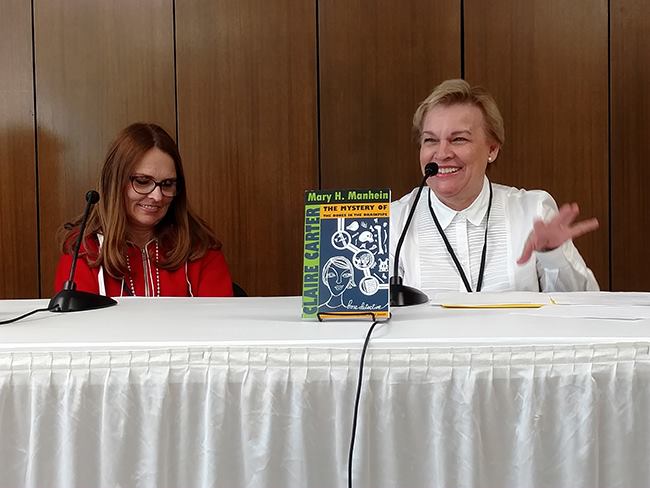
5. What is your goal with the children’s book series? How many books will there be?
M: The goal is always to tell good stories. In this case, the mysteries grounded in science provide a different perspective on the human skeleton. I believe that if young people are introduced to the field of forensic anthropology early on, they may come up with exciting new ways in which my field can assist in scientific endeavors. I was an English major in college and was going to teach English to middle or high school students. I took an anthropology course in my senior year at LSU and fell in love with it. I immediately applied to graduate school in anthropology, and the rest is history. The subfields of anthropology–biological anthropology, archaeology, linguistics and cultural–combine to explore who we are as humans. In many ways, I use all of these subfields in my writing.
After creating both the LSU FACES Lab and the Louisiana Repository for Unidentified Missing Persons Information Program (of course, along with the help of many other individuals), I was ready to leave academia and try something new. Since I had already written several books, both fiction and nonfiction, on my work, I wanted a new audience. Young people are brutally honest, and I wanted to learn to write for them in a way that would capture their attention. I hope I can do that. At this time, I have no idea how many adventures Claire and Penelope will have, but I imagine it will be quite a few.
J: To educate and entertain readers about not only the field of forensic anthropology, but also about Louisiana and the countless interesting things (natural, historical and cultural) that should be a source of pride for us all. As far as how many books will be in the series, I am certain that there is an endless supply of fascinating stories in Mary’s head.
6. How did you go about bringing science terms and principles to a level that is both understandable and enjoyable to children?
M: Great question. Since I had the experience of giving presentations to all age groups over the years (as young as 3 or 4 and also to retirees), I felt that I could simply continue to present the science in such a way as I had done for so many years. For each age group, I have always used my intuition about what was appropriate and what was not for that age group. For example, I assured very young children they could do the “one finger touch” in presentations on the skeleton. They could choose to touch a bone or not–their choice. When you give children a choice in such situations, their curiosity often gets the best of them. Few declined the offer. I believe I taught them respect and appreciation for the human skeleton without relegating it to some Halloween prop. I simply followed the same guidelines in writing the series. One great component of the series is the glossary in the back of each book. Any time a specific word is introduced in a mystery, it is highlighted in bold and appears in the glossary in the back of the book. These are great vocabulary words for teachers to use. Along with that are drawings that illustrate certain aspects of the skeleton featured in that particular book.
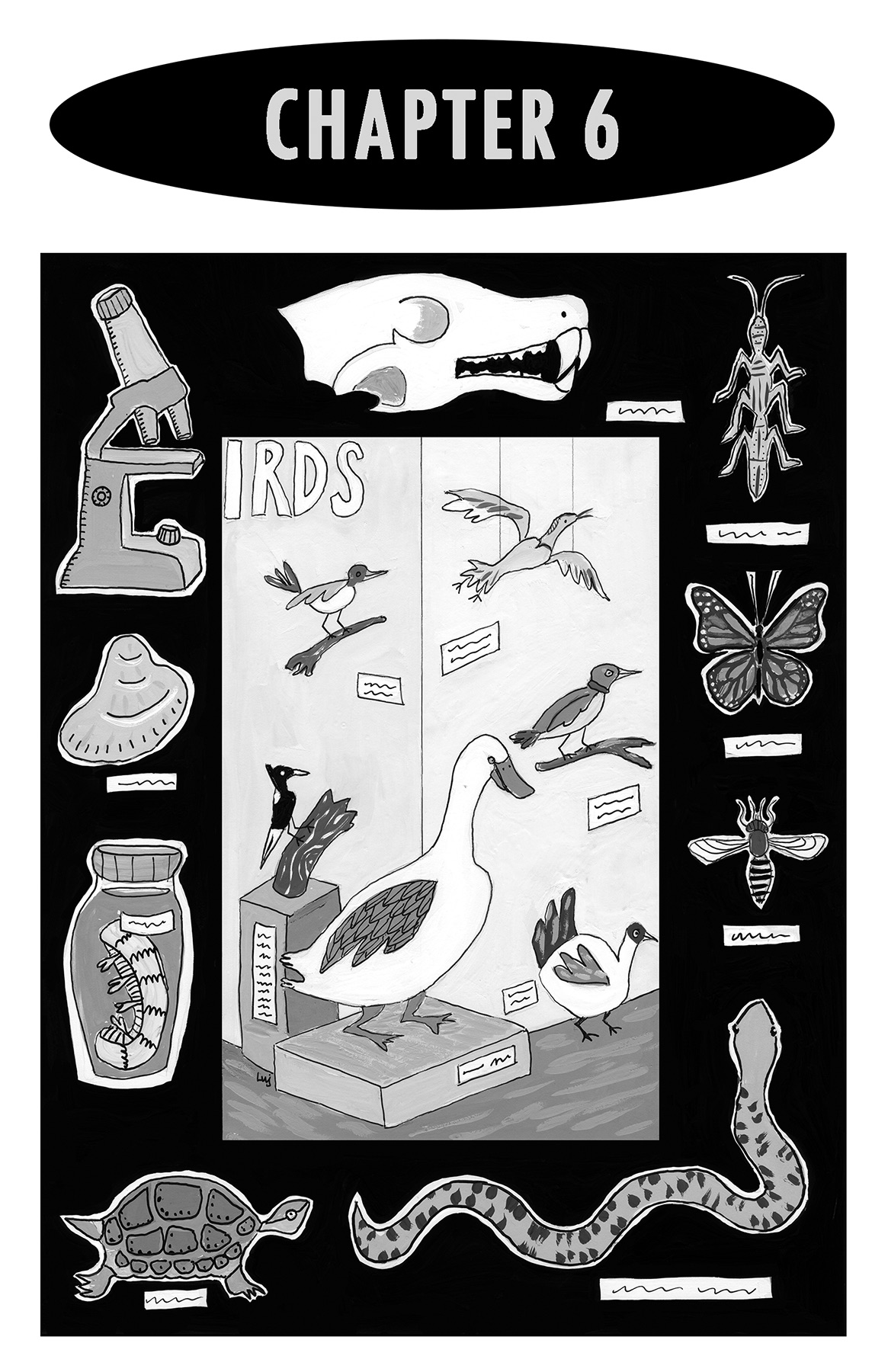
7. Leah, what was your inspiration for the illustration style?
J: I love the work of illustrators Jan Brett and Jane Ray. Their styles are very different, but they both employ a central vignette, surrounded by images in an illustrated border. With the Claire Carter series, I wanted to be able to show actual scenes but also present objects or ideas in a kind of dream-like way, out of the context of reality. I like the way that a central scene with a border accomplishes that.
8. Mary, what has been your experience as a woman in the science field? What is your advice to girls interested in science?
M: Over the years, I have met hundreds and hundreds of law enforcement agents and other professionals (doctors, lawyers, engineers, politicians) in various fields. For the most part, people are so intrigued by the field of forensic anthropology, and the fact that I am a woman plays no role.
My advice to girls interested in science is to pursue your interest without hesitation. At the same time, don’t relinquish your interest in other fields. I was a writer who became a scientist who became a writer again. There is room in all fields to combine different interests and talents. For example, a young woman who has an interest in both biological anthropology and engineering could pursue a career that deals with creating prosthetics for both children and adults. Or, as another example, a person interested in architecture might wish to design homes for people who are physically challenged and would need to understand the challenges of design for someone with skeletal injuries or other physical limitations. My point is that humanities and science walk hand in hand, and both can contribute to choices for a career.
9. What is your advice to women looking to start a business or company?
M: Starting a business is not easy. Have a plan of how to pursue success. Understand that there will be disappointments along the way. Don’t give up. If you plan to have a partner, choose someone whom you know and go into the endeavor with eyes wide open. Success will be based on the dedication and time you both contribute to the business.
J: I think it would be the same advice for anyone: Do your homework, make a plan, prepare to work hard, and keep at it.
10. Can you share a hint about the next book/series, or what you will be up to next?
M: Of course! The next book is Claire Carter, Bone Detective: The Mystery of Skull Lake. Skull Lake takes part in an entirely different part of the state and includes folklore and other Louisiana mysteries. Claire and Penelope are off on an adventure that will educate and entertain young people in an entirely different way than the first book. This second in the series will be out in the fall of 2019.
To learn more about Claire Carter and Os Liber Press, visit osliberpress.com.




